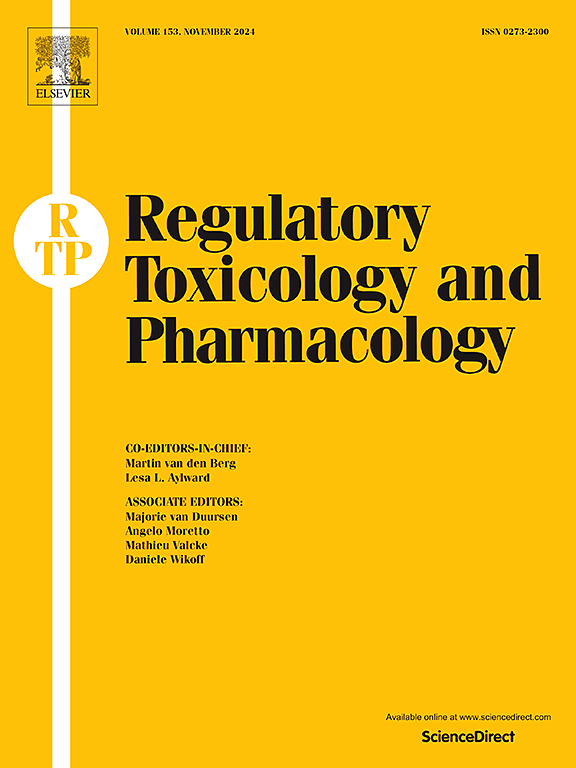Radon concentration and physicochemical properties measurement and internal exposure assessment in different brands of commercial soft drinks consumed in Türkiye
IF 3.5
4区 医学
Q1 MEDICINE, LEGAL
引用次数: 0
Abstract
Energy drinks (EDs) are soft drinks with energy-boosting ingredients such as caffeine, taurine, vitamin B, and herbal extracts. In this study, the first-ever radon activity concentrations of thirty-five canned ED samples from mostly preferred sixteen assorted brands consumed in Türkiye were analyzed by using a monitoring system. Also, radiological risk resulting from internal exposure due to the ionizing radiation emitted from radon, and its short-lived decay daughters were assessed for adults. Additionally, some physicochemical parameters of ED samples were determined by well-known instruments. Radon activity concentrations analyzed in ED samples ranged from 21.3 ± 0.8 to 37.5 ± 1.8 mBq/L and these values are significantly below the limits recommended for drinking water by the US Environmental Protection Agency and the European Union directive. The values of physicochemical parameters determined for ED samples ranged 2.56 to 4.30 (pH), 593 to 3030 μS/cm (electrical conductivity), 525–2680 mg/L (total dissolved solids) and 1.30–13.20 % (Brix values). Since the annual effective doses estimated based on the annual consumption of soft drinks and EDs per capita in Türkiye are well below the individual dose criterion of 100 μSv, the radiological risk is at a negligible level.
在日本消费的不同品牌商业软饮料的氡浓度、物理化学性质测量和内部暴露评估
能量饮料(EDs)是一种含有咖啡因、牛磺酸、维生素B和草药提取物等增强能量成分的软饮料。在这项研究中,使用监测系统首次分析了35个罐装ED样品的氡活度浓度,这些样品来自 rkiye最受欢迎的16个组合品牌。此外,还评估了由氡发出的电离辐射及其短寿命衰变子体引起的成人内部照射所造成的辐射风险。另外,用知名仪器测定了ED样品的一些理化参数。在ED样品中分析的氡活度浓度范围为21.3±0.8至37.5±1.8 mBq/L,这些值明显低于美国环境保护署和欧盟指令建议的饮用水限值。测定ED样品的理化参数范围为2.56 ~ 4.30 (pH), 593 ~ 3030 μS/cm(电导率),525 ~ 2680 mg/L(总溶解固形物)和1.30 ~ 13.20%(白利度值)。由于根据基耶人年软饮料消费量和人均EDs估计的年有效剂量远低于100 μSv的个人剂量标准,因此辐射风险处于可忽略不计的水平。
本文章由计算机程序翻译,如有差异,请以英文原文为准。
求助全文
约1分钟内获得全文
求助全文
来源期刊
CiteScore
6.70
自引率
8.80%
发文量
147
审稿时长
58 days
期刊介绍:
Regulatory Toxicology and Pharmacology publishes peer reviewed articles that involve the generation, evaluation, and interpretation of experimental animal and human data that are of direct importance and relevance for regulatory authorities with respect to toxicological and pharmacological regulations in society. All peer-reviewed articles that are published should be devoted to improve the protection of human health and environment. Reviews and discussions are welcomed that address legal and/or regulatory decisions with respect to risk assessment and management of toxicological and pharmacological compounds on a scientific basis. It addresses an international readership of scientists, risk assessors and managers, and other professionals active in the field of human and environmental health.
Types of peer-reviewed articles published:
-Original research articles of relevance for regulatory aspects covering aspects including, but not limited to:
1.Factors influencing human sensitivity
2.Exposure science related to risk assessment
3.Alternative toxicological test methods
4.Frameworks for evaluation and integration of data in regulatory evaluations
5.Harmonization across regulatory agencies
6.Read-across methods and evaluations
-Contemporary Reviews on policy related Research issues
-Letters to the Editor
-Guest Editorials (by Invitation)

 求助内容:
求助内容: 应助结果提醒方式:
应助结果提醒方式:


